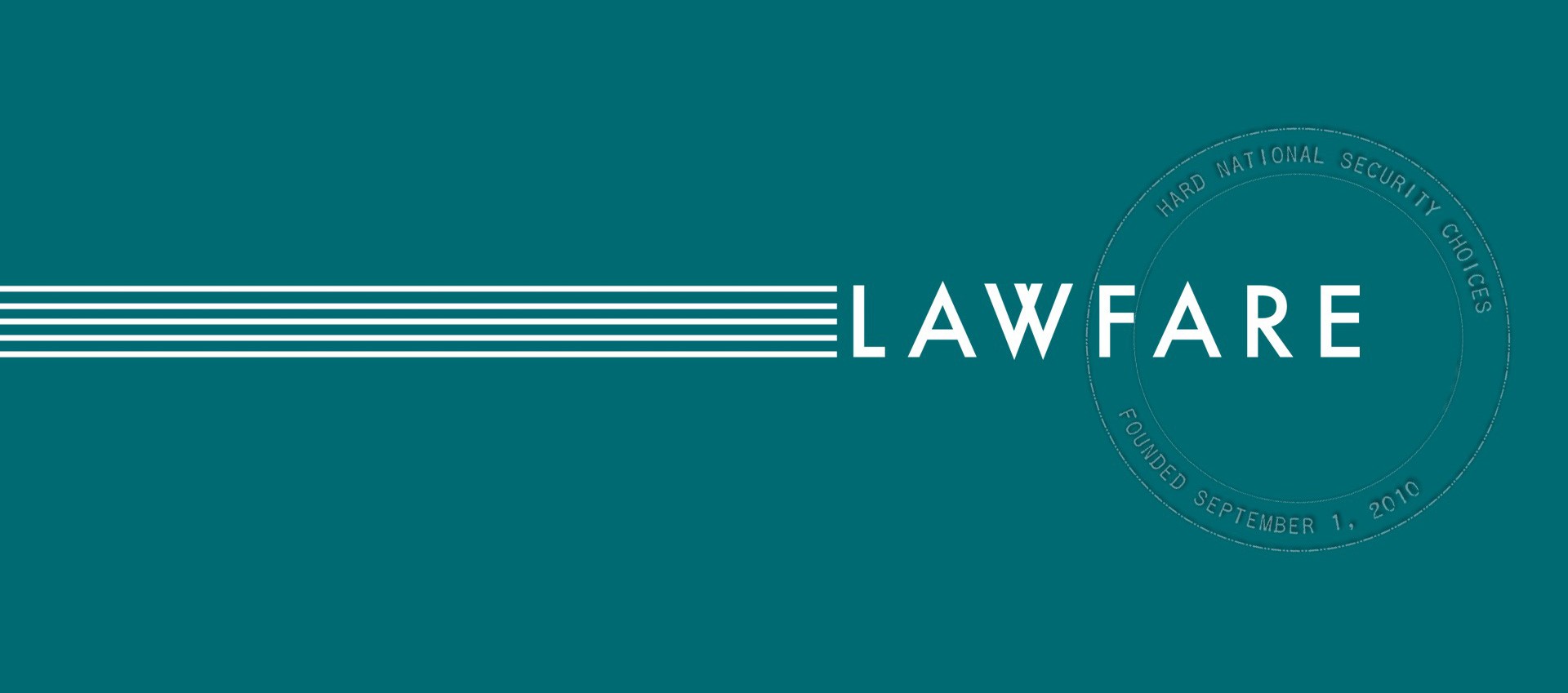The Bomb Still Ticks
A review of Fred Kaplan, “The Bomb: Presidents, Generals, and the Secret History of Nuclear War” (Simon & Schuster, 2020).
Published by The Lawfare Institute
in Cooperation With

A review of Fred Kaplan, “The Bomb: Presidents, Generals, and the Secret History of Nuclear War” (Simon & Schuster, 2020).
***
“Nuclear books don’t sell,” a New York book editor advised not long ago. “To have a chance, you would have to feature a really interesting central character.” Fred Kaplan’s excellent new volume, “The Bomb: Presidents, Generals, and the Secret History of Nuclear War,” will test this proposition. Plenty of characters (nearly all male) abound in his fast-paced easy-to-follow narrative: from Curtis LeMay, Robert McNamara, John Kennedy, Henry Kissinger, Richard Nixon, and so on to Barack Obama and Donald Trump. But what drives the story is an unresolvable dilemma: “[h]ow to plan a nuclear attack that [is] large enough to terrify the enemy but small enough to be recognized unambiguously as a limited strike, so that, if the enemy retaliated, he’d keep his strike limited too” (p. 120).
This question introduces Kaplan’s other protagonist: the rabbit hole. To convince an adversary that you really would nuke him, you had to convince yourself that you would keep fighting after he hit you back, until he gave up or you destroyed each other (and maybe the rest of the world). “The compelling, and frightening, thing about the logic was that once you bought into its premises, you fell into the rabbit hole; there seemed no exit” (p. 298).
This can be dismal and dense stuff, but Kaplan’s narration is so brisk and keen that you speed through it. A longtime reporter at Slate, and the author of the seminal 1983 study of nuclear deterrence and war planning, “The Wizards of Armageddon,” Kaplan knows this story well. The earlier chapters come to life through quotations from recently released White House audio files and declassified documents. The chapters on the George H.W. Bush, Obama and Trump administrations benefit vividly from extensive interviews with key aides and policymakers.
Several themes stand out.
Successive presidents are briefed about extant nuclear war plans. They are shocked by the scale of destruction and death they would cause. Presidents—via their civilian advisers—then order changes. Often they believe these changes really make a difference. Yet their successors arrive and discover that operational plans still call for more weapons to be detonated over more targets with more destruction than the new president can abide.
Henry Kissinger wrote several (famous, though overrated) books and articles on nuclear strategy before he became national security adviser in Nixon’s first term. After receiving his initial briefings on nuclear war plans, he demanded changes. Four years later, in a meeting with 15 officials from the relevant military and civilian agencies, Kissinger grumbled: “We have come to no conclusions …. What … does ‘control of escalation’ mean? ... To have [as] the only option that of killing 80 million people is the height of immorality” (pp. 114-116).
Nearly 15 years later, in the Reagan administration, two young Defense Department policymakers—Franklin Miller and Gil Klinger—scrubbed the nuclear war plan in a similar attempt at reform. Klinger “drew a fifty-mile circle around [Moscow] and counted the number of weapons that were aimed at targets within the circle,” Kaplan writes. “There were 689 of them, many releasing more than a megaton of explosive power” (pp. 186-187).
Even Ronald Reagan and (less surprisingly) Mikhail Gorbachev could not overcome the gravitational force of the rabbit hole. At Reykjavik, in 1986, the two leaders agreed to each cut their ballistic missile stockpiles by 50 percent within five years, followed by elimination of the rest over the next five years. The catch was that the Soviets wanted the U.S. to confine testing of ballistic missile defenses (the Strategic Defense Initiative) to the laboratory for 10 years. No testing in outer space. Reagan could not agree to that; Gorbachev’s military would not let him accept anything less. And so 34 years later, the United States still does not have a reliable defense against intercontinental ballistic missiles and has entered a renewed missile arms race with Russia.
Barack Obama understood the problem. “Let’s stipulate that this is all insane,” he said at the beginning of a National Security Council meeting on nuclear policy, Kaplan writes (p. 243). But Obama also knew he lacked the political capital to overcome the resistance in Washington and Moscow and concluded he could not achieve more than was done in the 2010 Nuclear Posture Review and the New START Treaty of the same year.
Kaplan reports from the rabbit hole; he does not try to guide readers out of it. But the documents and people he quotes provide at least two clues for deciding how much nuclear weaponry and war would be too much.
When the aforementioned Franklin Miller and Gil Klinger were doing their targeting review in the late 1980s, Klinger quipped to Miller: “If (God forbid) there’s a nuclear war, and if (God forbid) you and I survive it, and if (God forbid) the Russians win, we’re going to be put on trial at Nuremberg” (p. 180). (Presumably they would have been just as guilty if the U.S. won but would not have faced trial.)
Fast forward 30 years. The Trump administration’s 2018 Nuclear Posture Review (like the Obama administration’s before it) affirms the United States’s commitment to “adhere to the law of armed conflict [in any] initiation and conduct of nuclear operations.” Yet U.S. officials never detail how this would be done. (The other eight nuclear-armed states, nota bene, are even less forthcoming.) Kaplan recounts how numerous war-planning documents declare obligatorily that these weapons are not aimed “at population per se,” or that operations would spare urban areas “to the degree practicable,” but nevertheless call for hundreds of detonations on cities (p. 176).
To move beyond false legal consciousness, we might ask whether compliance with the law of armed conflict (or at least less unnecessary human and environmental destruction) would be more likely with a smaller arsenal of lower-yield weapons that were not meant to be used in a first strike against Russian or Chinese nuclear deterrents. Of course, the U.S. would not unilaterally change its arsenal this way. But the question could guide a way out of the rabbit hole, prompting the U.S. to seek reciprocal moves from Russia, and an agreement from China not to expand its smaller and more restrained nuclear posture.
The second clue, like the dog that doesn’t bark, is the silence of nuclear policy-makers regarding the environmental consequences of nuclear war. The larger the yield and the more urban the target, the greater the risk that soot from fires will be chimneyed up into the stratosphere where it can persist and block sunlight, reducing evaporation and rain on which agriculture depends. This prospect—“nuclear winter”—was widely reported and publicly debated in the early 1980s. Kaplan ignores it because the U.S.’s (and other nuclear countries’) nuclear policy-makers have ignored it. They would reckon with it only if they were pressed to answer the question: How much is too much?
The science of nuclear winter is uncertain, so an obvious move would be for the U.S. and other states to commission scientific bodies to model the most plausible nuclear war scenarios and assess the climatologic (and other) effects. These studies could then be made available for international experts to analyze and debate. If some types of arsenals and targeting plans are not so threatening to the global food chain, this finding should be used as a benchmark for making deterrents more accountable to the interests of all humankind. (Advocates of nuclear prohibition could still make other arguments for complete disarmament.)
For all the new, often vivid details “The Bomb” offers, it brings the reader—at least this one—back to two old observations and a conclusion. First, nuclear deterrence is rational. Second, escalatory nuclear war would be murderous, suicidal and irrational. Therefore, as long as states retain nuclear weapons, the physical potential for escalation must be severely limited.
Kaplan shows in this book that the Americans and Russians who built the doomsday machine will not allow it to be dismantled. The more pertinent question is whether they could be motivated to meaningfully downsize and constrain it, as the United Kingdom and France, arguably, have done. Don’t hold your breath, but don’t look away either. Your future may depend on it.




